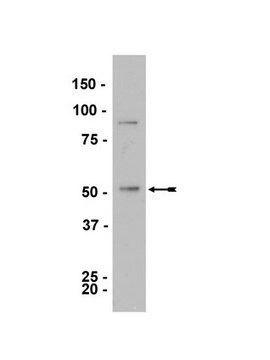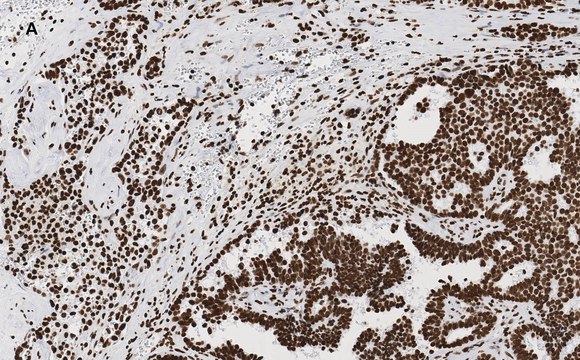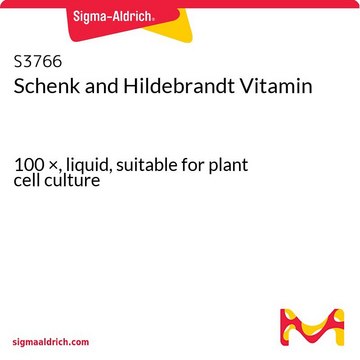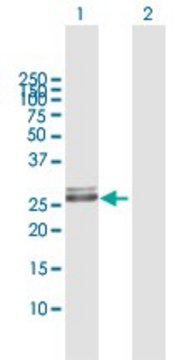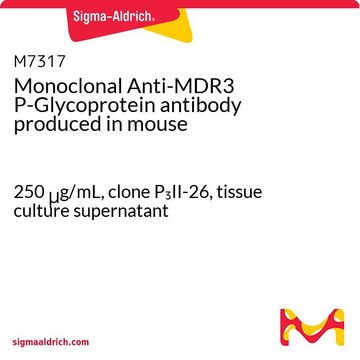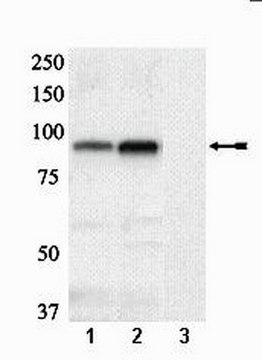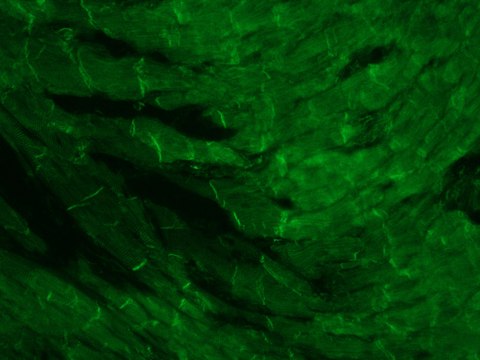04-791
Anti-mono/di/trimethyl-Histone H3 (Lys4) Antibody, clone AW304, rabbit monoclonal
culture supernatant, clone AW304, Upstate®
Synonym(s):
H3K4me, Histone H3 (methyl K4)
About This Item
Recommended Products
biological source
rabbit
Quality Level
antibody form
culture supernatant
antibody product type
primary antibodies
clone
AW304, monoclonal
species reactivity
vertebrates, human
manufacturer/tradename
Upstate®
technique(s)
ChIP: suitable
inhibition assay: suitable (peptide)
multiplexing: suitable
western blot: suitable
isotype
IgG
NCBI accession no.
UniProt accession no.
shipped in
dry ice
target post-translational modification
monomethylation (Lys4)
Gene Information
human ... H3C1(8350)
General description
Specificity
Immunogen
Application
The antibody was reported by an independent laboratory as suitable for ChIP.
Immunoblot Analysis:
A previous lot detected methylated Histone H3 in acid-extracted proteins from HeLa cells. The antibody did not detect unmethylated recombinant histone H3 (Catalog # 14-494).
Peptide Inhibition Analysis:
2 μM of a histone H3 peptide containing monomethyl-lysine 4, dimethyl lysine 4, and trimethyl-lysine 4 abolished detection of histone H3 by this lot in immunoblot analysis of HeLa acid extracts. Some signal reduction was observed with histone H3 peptides containing dimethyl-lysine 9 or 27.
Beadlyte Histone-Peptide Specificity Assay: 1:1,000-1:2,000 dilutions of this lot were incubated with histone H3 peptides containing various modifications conjugated to Luminex microspheres. Specificity for mono, di, and trimethyl-lysine 4 was demonstrated.
Epigenetics & Nuclear Function
Histones
Quality
Immunoblot Analysis: A 1:500 (lane 1) and 1:1000 (lane 2) dilution of this lot detected methylated Histone H3 in HeLa nuclear extracts.
Target description
Linkage
Physical form
Storage and Stability
For maximum recovery of product, centrifuge the vial prior to removing the cap. Avoid repeated freeze/thaw cycles, which may damage IgG and affect product performance.
Analysis Note
HeLa cell nuclear or acid extracts.
Legal Information
Disclaimer
Not finding the right product?
Try our Product Selector Tool.
Storage Class Code
12 - Non Combustible Liquids
WGK
WGK 1
Flash Point(F)
Not applicable
Flash Point(C)
Not applicable
Certificates of Analysis (COA)
Search for Certificates of Analysis (COA) by entering the products Lot/Batch Number. Lot and Batch Numbers can be found on a product’s label following the words ‘Lot’ or ‘Batch’.
Already Own This Product?
Find documentation for the products that you have recently purchased in the Document Library.
Our team of scientists has experience in all areas of research including Life Science, Material Science, Chemical Synthesis, Chromatography, Analytical and many others.
Contact Technical Service
